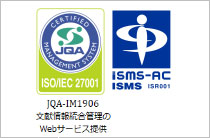ホームIMICライブラリMMWR抄訳2011年(Vol.60)ラテン系成人における医師に診断された関節炎および関・・・
2011/02/18Vol. 60 / No. 6
MMWR60(6):167-171
Prevalence of Doctor-Diagnosed Arthritis and Arthritis-Attributable Effects Among Hispanic Adults, by Hispanic Subgroup - United States, 2002, 2003, 2006, and 2009
ラテン系成人における医師に診断された関節炎および関節炎による影響の有病率-アメリカ、2002、2003、2006および2009年
アメリカにおける関節炎および関節炎に起因する活動制限(AAAL)など関節炎による影響を有する成人は人種/民族により異なり、非ラテン系白人および非ラテン系黒人は医師に診断された関節炎の有病率がラテン系に比べ高く、ラテン系および非ラテン系黒人は関節炎による影響の有病率が非ラテン系白人に比べ高いと報告されている。今回、CDCはNational Health Interview Survey (NHIS)の2002、2003、2006および2009年データから、ラテン系亜集団(メキシコ人、メキシコ系アメリカ人、中央/南アメリカ人、プエルトリコ人、キューバ/キューバ系アメリカ人、ドミニカ/ドミニカ系アメリカ人、その他)におけるこれらの有病率の分析を行った。その結果、医師に診断された関節炎の有病率はキューバ/キューバ系アメリカ人(11.7%)にて最も低く、プエルトリコ人(21.8%)にて最も高く、全体の症例数は約310万人であった。また、全ての亜集団において高齢者(65歳以上)、女性および肥満[肥満度指数(BMI)30以上]の症例にて有病率が高い傾向が認められた。関節炎による影響に関しては、AAAL(約140万例)はキューバ/キューバ系アメリカ人:21.1%~プエルトリコ人:48.5%、関節炎に起因する労働制限(AAWL、約875,000例)は中央/南アメリカ人:32.9%~メキシコ系アメリカ人:41.6%、重度の関節痛(SJP、約120万例)はキューバ/キューバ系アメリカ人:23.7%~プエルトリコ人:44.1%であった。以上、多数のラテン系人が関節炎および関節炎による影響を有しており、今後、これらの症例におけるQOLを改善することを目的とした積極的な介入措置の必要性が示唆された。
References
- CDC. Prevalence of doctor-diagnosed arthritis and arthritis-attributable activity limitation-United States, 2007-2009. MMWR 2010;59:1261-5.
- CDC. Racial/ethnic differences in the prevalence and impact of doctor-diagnosed arthritis-United States, 2002. MMWR 2005;54:119-23.
- CDC. Arthritis: meeting the challenge. Atlanta, GA: US Department of Health and Human Services, CDC; 2010. Available at <http://www.cdc.gov/chronicdisease/resources/publications/aag /arthritis.htm>. Accessed February 10, 2011.
- Klein RJ, Schoenborn CA. Age adjustment using the 2000 projected U.S. population. Healthy People 2010 Stat Notes 2001;20:1-10.
- Hajat A, Lucas JB, Kington R. Health outcomes among Hispanic subgroups: data from the National Health Interview Survey, 1992-95. Adv Data 2000;310:1-14.
- Tucker KL, Falcon LM, Bianchi LA, Cacho E, Bermudez OI. Self-reported prevalence and health correlates of functional limitation among Massachusetts elderly Puerto Ricans, Dominicans, and non-Hispanic white neighborhood comparison group. J Gerontol A Biol Sci Med Sci 2000;55:M90-7.
- Lopez MH, Taylor P. Latinos and the 2010 Census: the foreign born are more positive. Washington, DC: Pew Hispanic Center; 2010. Available at <http://pewhispanic.org/files/reports/121.pdf>. Accessed February 10, 2011.
- Dockterman D. Country of origin profiles: without health insurance. Washington, DC: Pew Hispanic Center; 2010. Available at <http://pewhispanic.org/data/origins>. Accessed February 10, 2011.
- Brady TJ, Jernick SL, Hootman JM, Sniezek JE. Public health interventions for arthritis: expanding the toolbox of evidence-based interventions. J Womens Health (Larchmt) 2009;18:1905-17.
- Brady T, Lam J. Impact of Buenos Dias, Artritis, a Spanish health communications campaign promoting physical activity among Spanish-speaking people with arthritis. Arthritis Rheum 2010;62:S611.
Copyright © 2013 International Medical Information Center. All Rights Reserved.












